With a predominantly rural population, characterized by over 83% residing in villages, and a substantial majority belonging to Scheduled Tribes, Nandurbar presents a unique set of challenges and opportunities.
By focusing on water conservation, soil fertility enhancement, and sustainable farming practices, Nature+ mitigates the vulnerabilities of local communities to climatic fluctuations and enhances their resilience.
Moreover, by promoting the sustainable utilization of trees and forest resources and the development of alternative livelihoods, the initiative empowers tribal communities to preserve their traditional ecological knowledge.
Contact: Alok K. Sikka, Country Representative and Principal Researcher International Water Management Institute (IWMI), New Delhi a.sikka(at)cgiar.org
Operating Location: Shahada Cluster, Nandurbar district
Traditional Name: नंदुरबार जिल्हा
Area of Operation: 5 villages distributed on 3,500 hectares
Coordinates: 21.3700° N 74.2400° E
Communities: Tribes: Bhil, Pawara, Kokani. The project involves five villages in Nandurbar’s Shahada cluster: Ranipur, Nagziri, Chirde, Pimprani, Kotbandini.
Description of the Area: The area is diverse, featuring southern hilly areas, alluvial deposits around the Tapi river, and the northern part forming part of the Satpura range.
Nandurbar’s villages experience hot and dry conditions with three distinct seasons: a scorching summer, a humid monsoon, and a mildly cold winter. Annual rainfall is variable, with the northern and western regions receiving more precipitation than the rest of the area. This challenging climate exacerbates agricultural and water-related issues, making sustainable development critical for the well-being of Nandurbar’s cluster residents.



Nandurbar is predominantly rural, with over 83% of its population living in villages and a significant proportion belonging to Scheduled Tribes, particularly the Bhils and the Pawra. Key challenges in Nandurbar include severe soil erosion due to its hilly terrain, erratic rainfall patterns, and poor groundwater availability.
The initiative’s goals are multifaceted, aiming to enhance water conservation through sustainable practices, reduce soil erosion, and improve soil fertility. By promoting sustainable agriculture and developing value chains for NTFPs, the initiative seeks to bolster the local economy and preserve traditional ecological knowledge. Furthermore, it aims to diversify livelihoods through activities like goat husbandry, thereby reducing dependency on seasonal migration and providing more stable income sources for the tribal population.
Traditional farming methods in Nandurbar often involve use of chemical inputs that might lead to air pollution. The Initiative aims to mitigate it by promoting sustainable agricultural practices that reduce reliance on chemical fertilizers and pesticides, thus minimizing air pollutants.
Due to erratic rainfall patterns and high surface runoff, water scarcity is a pressing issue in Nandurbar, exacerbated by inefficient water management practices and lack of infrastructure for rainwater harvesting. By implementing water conservation techniques such as rainwater harvesting and watershed management, the initiative seeks to replenish aquifers and ensure sustainable water availability.
Climate change and rainfed agriculture increase the vulnerability of local agricultural practices. Soil acidity significantly affects soil fertility by altering the chemical, biological and physical properties of soil. Reclamation of soil fertility through organic farming, application of lime and gypsum, and soil conservation measures are key goals to increase agricultural productivity and reduce soil erosion.
The region’s forests, which are crucial for the livelihoods of tribal communities through non-timber forest products (NTFP), face degradation, impacting both the ecosystem and the economic stability of these communities. Protecting and restoring natural habitats, particularly forests, is crucial for preserving biodiversity and ecosystem services essential for the well-being of local communities.
Marginalization of tribal communities in Nandurbar, exacerbated by limited access to resources, lack of representation in governance structures, and socioeconomic disparities, hinders their participation in development initiatives. Nature-Positive Solutions initiative aims to promote equity and social inclusion by empowering marginalized tribal communities through capacity-building, livelihood diversification, and inclusive decision-making processes.
Rapid deforestation and land degradation in Nandurbar contribute to carbon emissions, exacerbating climate change effects such as extreme weather events and loss of ecosystem resilience. By promoting afforestation, agroforestry, and sustainable land management practices, the initiative seeks to enhance carbon sequestration and mitigate climate change impacts.
The CGIAR Initiative on Nature-Positive Solutions carries out its activities in partnership with numerous international and local organizations in order to leverage collaboration and the sharing of knowledge and skills and achieve the maximum possible impact. In each region several CG centers take part in the activities by contributing their expertise for the success of the entire initiative.
The project consists of interventions across five impact areas. Each intervention is on a path of continuous improvement, generating impacts across six dimensions: air, water, soil, biodiversity, equity, and climate. Collectively, these data points can be represented as an EBF ImpacTracker.
TECHNICAL NOTE
This initiative is ongoing. Endline benefit calculations are understood as “potential impacts” and not for use as a final report. Click on the icons to learn more about each impact area’s contributions or scroll down for additional details. Total scores are tabulated from the output of each ecological benefit.
Primary positive impacts generated by the Nature-Positive Solutions Initiative of the CGIAR on poverty reduction, food security, gender and social inclusion, climate mitigation and adaptation and environmental health.
Location: Shahada Cluster, Nandurbar district
Duration: 2022 – 2026
Interventions: Water security is a key element in this cluster, and many interventions revolve precisely around this, to make water-both drinking and irrigation water-available. Promoting agrobiodiversity helps promote more diverse and nutritious diets.
Location: Shahada Cluster, Nandurbar district
Duration: 2022 – 2026
Interventions: To reduce poverty in the Shahada cluster the Initiative on the one hand promotes the use of NTFPs from which local people can derive income, and on the other leverages the circular bioeconomy to extract value and economic opportunities from waste, such as the production of biofertilizers.
Location: Shahada Cluster, Nandurbar district
Duration: 2022 – 2026
Interventions: Social inclusion in Nandurbar is done primarily with the tribal populations that inhabit this district and who constitute the majority of the farmers with whom the initiative collaborates. Nature-positive practices derive from the fusion of science and indigenous knowledge and are distributed through training modules that ensure inclusion and equity.
Location: Shahada Cluster, Nandurbar district
Duration: 2022 – 2026
Interventions: Like many rainfed hill areas, adaptation to climate change in Shahada district is through water and local biodiversity. Interventions to save and reuse water make it available in dry periods, while participatory plant breeding makes available nutritious crop varieties that are resilient to local climate conditions.
Location: Shahada Cluster, Nandurbar district
Duration: 2022 – 2026
Interventions: Through the reintroduction of agroecological practices such as Wadi and the creation of native tree nurseries, the initiative restores health and diversity through interventions that include the reintroduction of trees and the restoration of degraded ecosystems.
About
The Nature-Positive Solutions platform is produced by The Lexicon with support from CGIAR, the Alliance of Bioversity International and CIAT, IWMI, IFPRI and CIP. Nature-Positive Solutions balance the needs of people and the planet, ensuring long-term ecological benefits, food security and livelihoods.
Team
Lexicon of Impacts is based on the Ecological Benefits Framework (EBF). This new paradigm provides a foundational architecture to radically transform global carbon, biodiversity, and ecological benefits markets. Coordinating financial institutions, UN agencies, NGOs, companies, and catalytic capital will bring attention to—and help create—a shared pathway for accelerated solutions, providing economic support for the people and projects that need it most.
This website was built by The Lexicon™, a 501(c)(3) tax-exempt nonprofit organization headquartered in Petaluma, CA.
Check out our Privacy Policy, Cookie Policy, and Terms of Use.
© 2024 – Lexicon of Impacts™